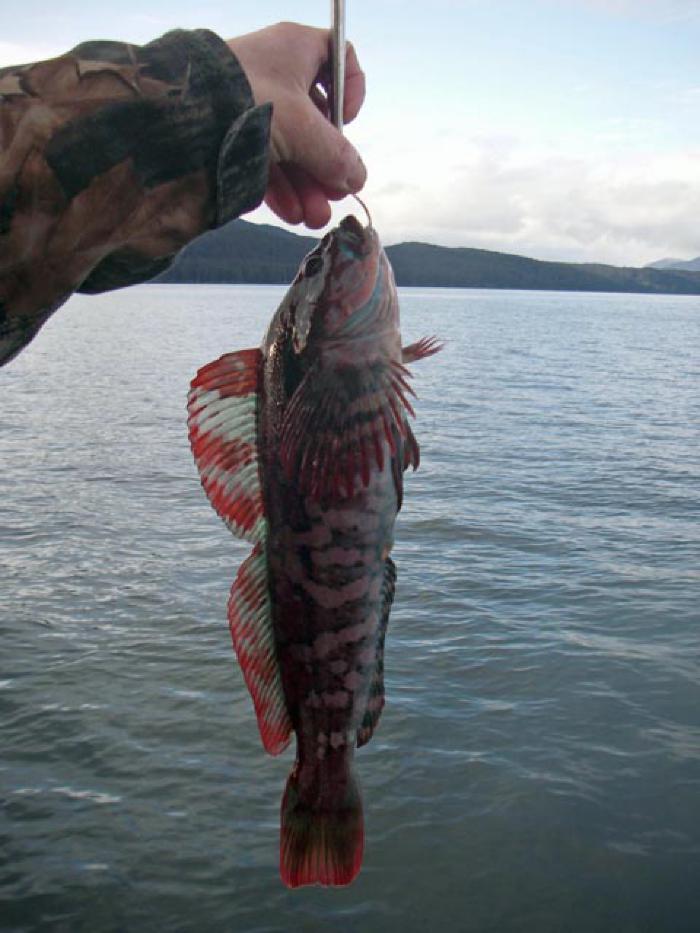Rockfish — Cilupuuk (N), CiRupuuk (S)

A variety of rockfishes (Sebastes spp.), including the Pacific ocean perch, yellowmouth, and rougheye, live in the marine waters surrounding Kodiak. These colorful fish grow up to eighteen inches long and can be found from the Aleutian Islands to southern California. In the Kodiak region, rockfish, particularly perch, concentrate in deep ocean waters of 300 to 2,600 feet. However, they may range closer to shore from May to September, feeding on the proliferation of food in warmer coastal water. Rockfish mate in September and then disperse over deep marine waters for the winter. Subsistence fishermen typically harvest them in the summer months. Like other marine fish, rockfish were captured with fishing rigs carved from wood, bone, and stone lowered into the ocean with kelp line.
Rockfish are members of the larger order of fish, the Scorpaeniformes. This group includes greenlings and sculpins. Archaeological data indicate that all of these fishes have been captured in small numbers by Alutiiq people for at least two thousand years, probably by fisherman jigging for the more popular and widely harvested cod. Fish remains from the Settlement Point site, a five-hundred-year-old winter village in Afognak Bay, illustrate this pattern. Salmon remains are most abundant (60 percent), followed by cod (36 percent), with notably smaller numbers of rockfish, greenling, and sculpins (3 percent), and a few flounder (1 percent). Halibut remains are rare in many archaeological sites, perhaps because these large fish were not butchered in villages.
